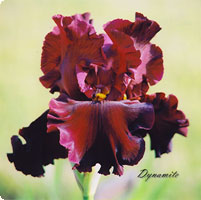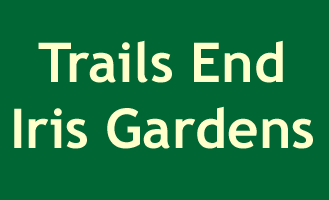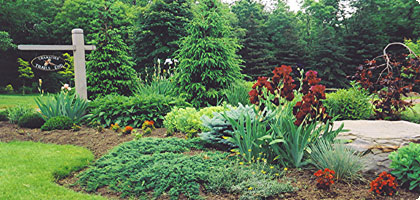Care and Maintenance
Old, Dead Leaves
During the growing season, the older outside leaves will brown and wither. Remove them promptly
and new leaves will replace them. In the fall be sure to remove all dead leaves to avoid over wintering insects and disease.
|
Dividing
Every 3-4 years, in late July, dig up the clump and divide the rhizomes. Cut off the larger, healthy outer rhizomes.
Throw out the old mother rhizome. She won't bloom again. Trim
the outer leaves to about 6" to 10" long. You will have
lots for your friends and family. If
you need a little help, come by or E-mail us in mid-summer and we will explain how.
P.S., they make great hostess gifts.
|
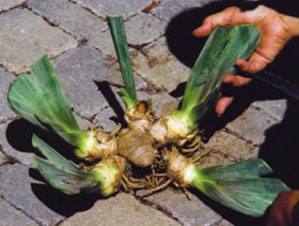 |
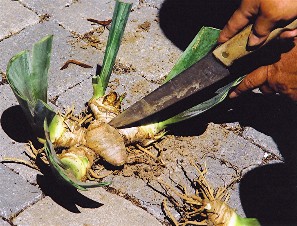 |
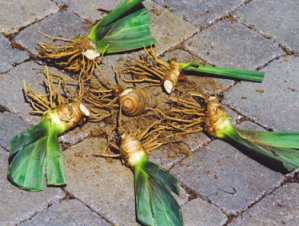 |
| Expose the clump |
Divide the rhizomes |
Five New Plants |
Fertilizing
Bearded Iris thrive with a minimum of fertilizer so most soils are more than adequate for good growth. If your plants need fertilizing do not use manure or high-nitrogen fertilizers which can promote soft growth that is apt to rot. Bone meal worked into the soil before planting is good; superphosphate is another good fertilizer. On established plants, a low nitrogen or balanced lawn fertilizer works well when applied in the spring about one month before bloom. Sprinkle on the ground around the plants, not on the Iris rhizome. Water in well.
Alfalfa pellets have been widely recommended as a fertilizer and organic soil conditioner.
They are available as rabbit and horse pellets from farm-feed stores such as
the Co-Op. We have been mixing the pellets into the soil when planting new
beds or as a light top-dressing around each established clump. About a cupful
will do it.
TIP!! If you decide to try
alfalfa, ask the supplier if it
is available in meal form. Mixes in the soil very nicely.
Winter Heaving
In our climate zone we typically experience freeze - thaw cycles mid-winter.
These temperature swings can result in heaving, particularly with newly-planted
Iris rhizomes whose roots are not yet well established.
Winter Mulch A thick covering of weed free straw or a
light covering of sand, or evergreen bough mulch would be beneficial,
particularly to new plantings, after the ground freezes. Dry Oak and Beech
leaves are good coverings since they do not pack down. Do not
use other types of leaves such as Maple since they are slimy
and prevent air circulation.
IMPORTANT: Be sure to remove all mulches in early spring
before new growth begins.
Newly (First Year) Planted Rhizomes
Vanessa is covering a recent introduction, Easter
Candy, with about 9" of weed-free straw. |
First Year Planted Bed
Here we have covered the entire newly planted bed with straw. In the spring the straw will be raked in between the rows
to help act as a weed barrier. |
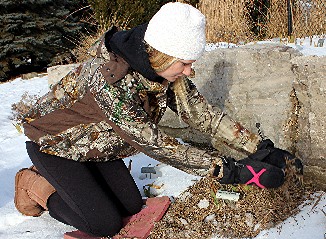
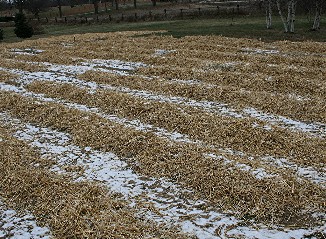
|
|
